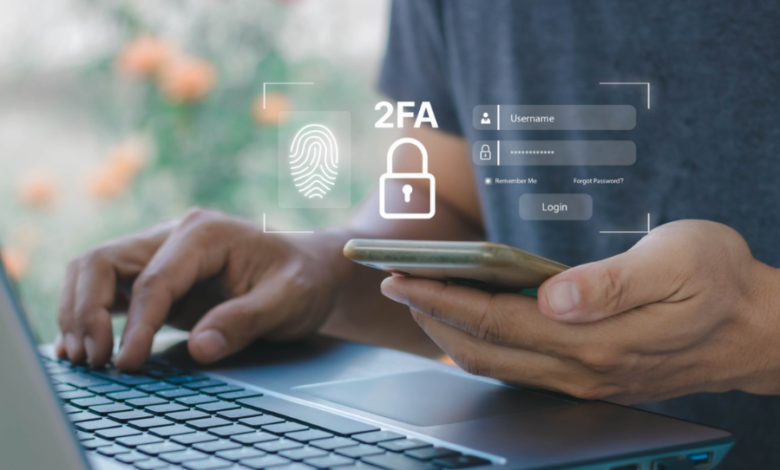Avoiding Account Takeovers: MFA as a Fast Fix for SMB Security Gaps

Cyber threats no longer focus solely on large enterprises. Small and mid-sized businesses are increasingly becoming prime targets. With limited IT resources and often weaker security protocols, SMBs are especially vulnerable to tactics like credential theft, phishing, and brute-force login attempts. A single compromised account can lead to stolen data, fraudulent transactions, or even full system lockouts. For many SMBs, the consequences of an account takeover extend far beyond technical issues, disrupting operations and damaging client trust.
One of the most practical and immediate defenses available is Multi-Factor Authentication (MFA). This simple but powerful tool prevents unauthorized access by requiring users to confirm their identity using more than just a password. Even if login credentials are compromised, MFA acts as a critical barrier that blocks attackers from getting in. For SMBs seeking a fast and effective way to strengthen security, MFA is a strong place to start. Partner with the Managed IT Services Minneapolis experts to implement MFA seamlessly, close security gaps quickly, and safeguard your SMB from account takeovers.
In this blog, we will explore MFA, show how it closes security gaps, and provide strategies for implementing MFA successfully in SMBs.
What Is Multi-Factor Authentication (MFA)?
Multi-Factor Authentication (MFA) is a security method that requires users to provide two or more different types of verification to access an account or system. Instead of relying on just a password, it adds extra steps like a code from a phone or a fingerprint scan. For SMBs, MFA provides a quick and cost-effective way to block unauthorized access and reduce the risk of account takeovers.
See also: The Ultimate Guide: Is a High-Pressure Opener Right for Your Home
How MFA Works as a Fast Fix for Security Gaps
- Prevents Unauthorized Access
MFA helps stop attackers even if they manage to steal a password. By requiring a second step, such as a code from a mobile app or a fingerprint, it becomes much harder for anyone without permission to gain access. This extra layer of security reduces the risk of account takeovers almost immediately.
- Reduces Dependence on Strong Passwords Alone
Passwords are often reused, forgotten, or too simple. MFA gives you backup protection even when a password is weak or compromised. It allows SMBs to enhance security without relying entirely on perfect password habits.
- Protects Remote and Cloud Access
With more teams working remotely and using cloud tools, access points have increased. MFA ensures that only verified users can access business systems, regardless of their login location.
- Meets Compliance Requirements
Many data privacy regulations and cyber insurance providers now expect strong authentication. MFA helps SMBs stay compliant without adding complex or expensive systems.
7 Strategies for Implementing MFA Successfully in SMBs
- Start with a Risk-Based Rollout
Not all users or systems carry the same level of risk. Admin accounts, finance tools, HR data, and client-facing applications are often more attractive to attackers than internal team dashboards or temporary user accounts.
Prioritizing these high-risk areas allows you to deploy protection where it matters most, instead of spreading resources too thin. This approach makes the transition smoother and avoids overwhelming your team while still addressing your most urgent security gaps.
- Choose User-Friendly MFA Methods
Not every authentication method suits every employee or business environment. Choosing solutions that feel natural to users increases acceptance and compliance. Mobile apps that generate one-time codes or push notifications often provide a simple, quick experience.
Biometric verification through devices already in use adds convenience. Frictionless adoption comes from tools that feel easy and familiar while still providing the security necessary to reduce exposure to threats. If MFA seems helpful instead of annoying, people will likely use it freely.
- Enforce Mandatory MFA Policies
Voluntary adoption leads to gaps in protection. Formalizing MFA through clear company policies ensures consistent usage across teams. Mandating MFA for access to business-critical systems removes ambiguity and sets expectations early.
When everyone is required to enroll and use MFA as part of standard operating procedures, the organization benefits from a uniform level of protection. This approach also supports consistent auditing and reporting, which can be critical for security reviews and regulatory checks.
- Educate and Train Your Team
The success of any security measure depends on the people using it. Without the proper guidance, users may see MFA as inconvenient or confusing. Providing simple instructions, visual walkthroughs, and short training sessions builds understanding and trust.
When users know why a step is essential and how to complete it confidently, they become allies in protecting your business. Training also helps your team respond correctly if an MFA prompt seems suspicious or if they lose access to a device, reducing downtime and panic in real-world situations.
- Plan for Backup and Recovery
Even the best MFA systems need a fallback when things go wrong. Employees might lose their phones, change numbers, or get locked out unexpectedly. Without a recovery plan in place, these situations can cause unnecessary downtime and stress.
Establishing backup options such as recovery codes, secondary contact methods, or IT-administered reset procedures gives users confidence that they won’t be stuck without access. These safeguards also reduce the burden on your IT support team since users will know what steps to take in advance. Preparing for the unexpected ensures that security doesn’t become a roadblock to productivity.
- Monitor Adoption and Usage
Once MFA is up and running, it’s essential to monitor how well it’s working. Tracking adoption rates helps identify if some employees haven’t enrolled or if specific systems were missed during rollout. Usage data can also reveal patterns of failed login attempts, repeated authentication requests, or other signs of suspicious activity.
Reviewing this data allows your team to address problems early, adjust rollout plans, or provide additional support where needed. Most platforms offer admin dashboards that make it easy to track MFA performance and flag potential risks. Ongoing monitoring ensures the system remains active, effective, and aligned with your business goals. If you are looking for expert guidance to track MFA adoption, usage, and security insights effectively, contact the IT Consulting Minneapolis team today.
- Review and Refine Regularly
Security is not static. Technology evolves, teams change, and new threats emerge. Reviewing your MFA implementation on a schedule ensures it stays relevant and practical. This includes checking if new platforms have been added without MFA, making sure recovery methods are still valid, and assessing whether the tools in place still meet your business needs.
Refining your MFA setup might involve adding conditional access rules, phasing out weaker methods, or upgrading to more seamless options as user comfort grows. Making these updates part of your broader IT routine helps your organization stay protected without falling behind.
The Future of MFA for SMBs
- Passwordless Authentication
Passwords are becoming less reliable and more frustrating. The future points to login methods that don’t require them at all. Instead, users will rely on things they have or are, like trusted devices or secure apps, creating a faster and safer login experience.
- Biometric Advancements
Fingerprint scans, facial recognition, and voice ID are improving rapidly. These tools make access more secure and convenient by tying authentication to something uniquely personal, which is much harder for attackers to fake or steal.
- Adaptive or Context-Aware MFA
Future MFA will become more intelligent by analyzing user behavior, location, and device type. If something seems off, like a login attempt from an unknown country, it can trigger extra verification instantly.
- Stronger MFA for Admins and High-Risk Users
Admins and sensitive data handlers will need even stronger protections. Enhanced MFA rules tailored to their roles will help prevent breaches that could impact the whole business.
Final Thoughts
Multi-Factor Authentication isn’t just another layer of security; it’s a practical, proven way for SMBs to close serious gaps that attackers often exploit. As account takeovers become more frequent and damaging, implementing MFA offers a fast, affordable, and highly effective line of defense. It helps safeguard sensitive data, protect remote access, and reduce the impact of human error without overcomplicating daily operations. For any SMB looking to strengthen its cybersecurity posture quickly and confidently, MFA is a smart place to start.






